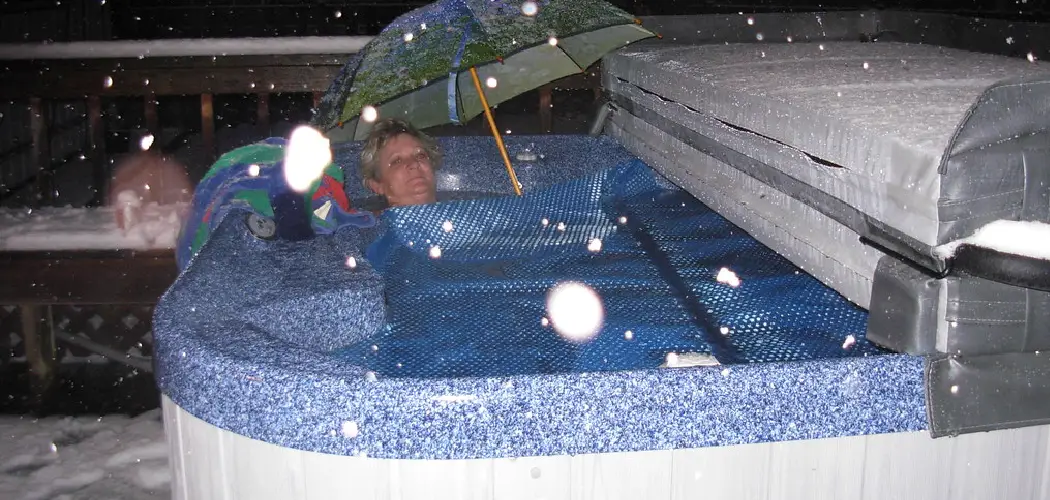Winter weather can be harsh on outdoor hot tubs, including inflatable ones. Temperatures drop below freezing, and the water in your hot tub may become dangerously cold. Therefore, it is important to insulate your inflatable hot tub during the winter season properly.
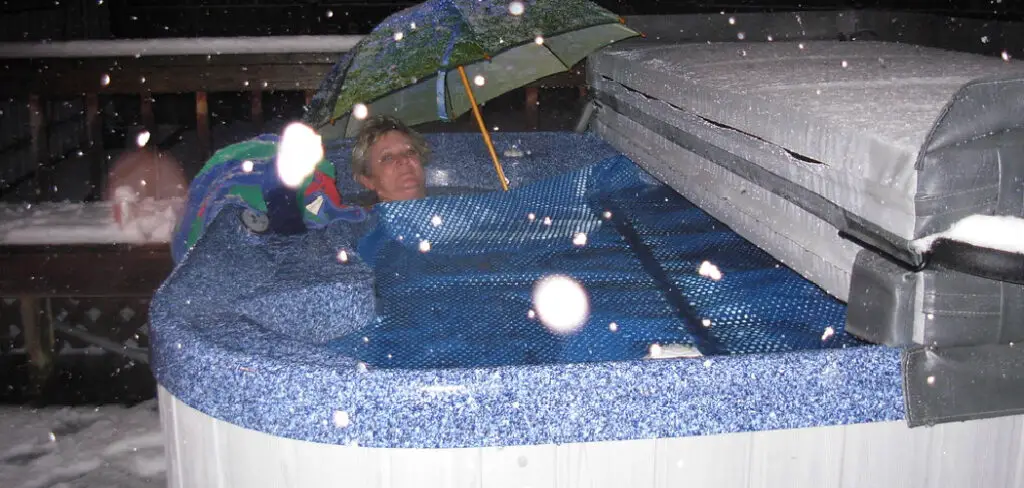
Insulating your hot tub will help keep the temperature of the water warmer and also help to reduce energy consumption.
Insulating your inflatable hot tub will also help to protect the material and make it last longer. Insulating your inflatable hot tub in winter offers many advantages. It can help keep the water warm during cold weather, reduce heat loss, and conserve energy.
Additionally, insulating your hot tub can extend its lifespan by protecting it from freezing temperatures and cracking. With the right insulation and proper maintenance, you can enjoy a warmer and longer-lasting hot tub, no matter the weather. You can find step-by-step instructions on how to insulate inflatable hot tub in winter in this blog article.
Materials You Will Need
- Heating source
- Insulation panels
- Foam sheeting or bubble wrap
- Vinyl sheeting or plastic tarp
- Sticky back foil tape
- Heavy-duty duct tape
- Rope
- Sandbag weights
- Utility knife
- Scissors
Step-by-Step Processes for How to Insulate Inflatable Hot Tub in Winter
Step 1: Inspect the Outside
Look around the base of the hot tub and examine for any holes, tears, or cracks. Clean up any dirt, debris, or leaves on top of and around where the hot tub sits. This will help you avoid clogging your filtration system with debris.
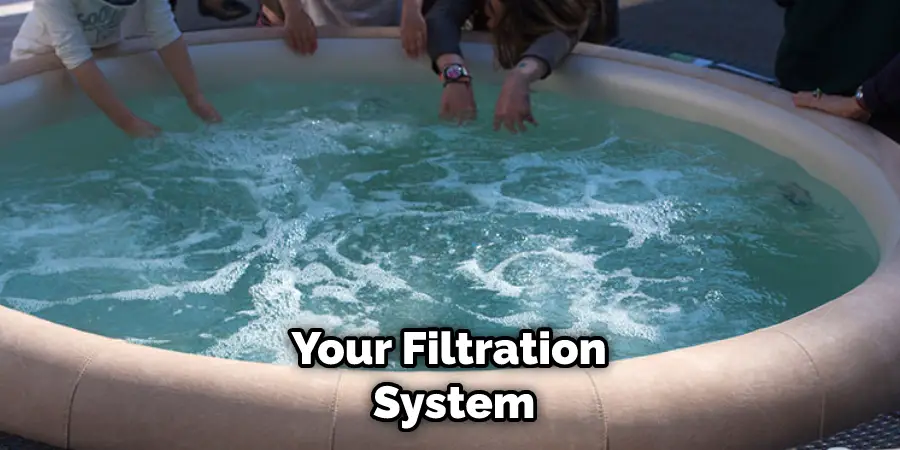
Step 2: Prep the Inside
If your hot tub has a cover, ensure it is in good condition. Repair any tears or replace them if necessary. Ensure the cover fits tightly over the top of the hot tub and is properly secured. Insulating materials can help keep the heat in, so invest in suitable insulation materials to wrap around the bottom of your hot tub.
This can include foam covers or blankets as well as reflective foil. These items help keep the cold out and prevent potential water leakage.
Step 3: Use a Hot Tub Cover
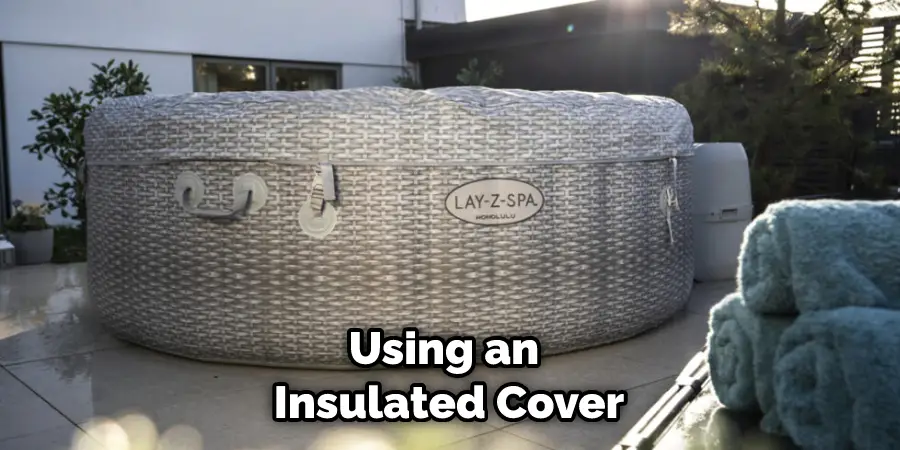
Using an insulated cover is one of the best ways to prevent heat loss and keep your hot tub warm. Look for covers with air pockets or special foam insulation to help trap the heat. Be sure to insulate any exposed pipes leading into or out of your hot tub. Insulating tape can be used to wrap around the pipes, and then insulation material can be placed over the tape.
Step 4: Improve Air Flow
Make sure the air circulating around your hot tub is not blocked. This will help keep temperatures consistent and prevent any freezing that might occur during cold weather. Keep vents free of debris, snow, or ice buildup to ensure proper air circulation. Installing a thermostat will help regulate the temperature of your hot tub.
The thermostat can be set to turn off when the water reaches a certain temperature which will help save energy. Additionally, installing a heater is a good way to provide additional insulation and keep the water warm.
Step 5: Add a Thermal Blanket
A thermal blanket can provide great insulation and help keep the water in your hot tub at a consistent temperature. A thermal blanket is designed to absorb heat from the air but also block it from escaping by providing insulation for your hot tub.
This is an inexpensive device that can be floated in your hot tub. The heat saver is designed to trap the warm air generated by the motor and filter so it does not escape into the atmosphere. This helps keep temperatures more consistent during cold weather.
Step 6: Check the Temperature Regularly
It’s important to regularly check the temperature of your hot tub to ensure it is not getting too cold. If your water gets too cold, you may need to add more insulation or adjust your thermostat settings. Additionally, checking the temperature often can help identify any potential problems before they become an issue.
Follow these steps for Insulated Inflatable Hot Tub in Winter, and you’ll be able to enjoy your hot tub all year round.
Precautions for How to Insulate Inflatable Hot Tub in Winter
- Check your inflatable hot tub’s manual to ensure it can withstand cold temperatures and that the insulation requirements are met.
- Insulate all sides of the hot tub with a thermal cover, preferably one that is designed specifically for an inflatable spa.
- Place a tarp or similar material over the top of the thermal cover to insulate it even more.
- Wrap a Spa Shock Saver around the tarp and hot tub, creating a double layer of insulation.
- Make sure to check your inflatable spa’s manual for any specific winterizing instructions that need to be followed.
- If you leave your hot tub unattended for long periods, unplug it from the power source and store it in a dry place.
- When filling the inflatable spa for winter storage, use an anti-freeze solution that your hot tub’s manufacturer recommends.
- Keep all electrical equipment away from the inflatable hot tub and store it somewhere safe to avoid any potential damage or harm.
By following these precautions, you can help ensure that your hot tub is properly insulated for cold temperatures during the winter months and remains in good condition.
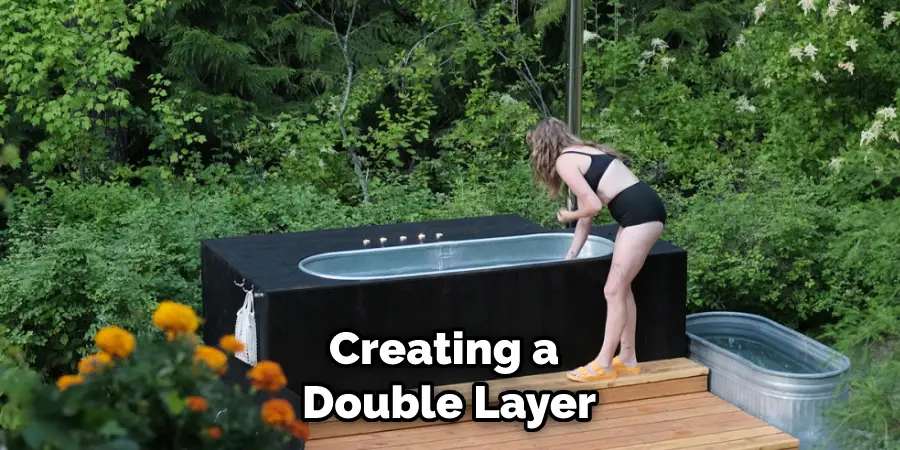
How Can You Maintain Your Inflatable Hot Tub Properly During Winter?
Winter is a time when temperatures drop and the nights become cold, which can put extra stress on an inflatable hot tub that you may have installed in your backyard.
To help ensure it stays safe and usable throughout the winter season, it’s important to insulate it properly against the elements. Here are some tips for how to best insulate an inflatable hot tub in winter:
- Make Sure the Hot Tub is Well-sealed: Start by inspecting the exterior walls and floor of the hot tub for any cracks or tears, which can allow cold air to enter. Use a patch kit to seal these areas if necessary. Additionally, check for wear around the seams, filters, jets, and other controls to ensure a tight seal.
- Use a Cover: A hot tub cover is essential in the winter for helping to keep heat in and cold out. Choose a cover that is specifically designed for your model hot tub, as it will fit better and provide more insulation than a generic one. Ensure the cover is properly secured and laced tightly when not in use.
- Insulate the Walls: Use an insulating blanket or foam sheets to help keep the heat inside your hot tub, even when the temperature drops significantly. It’s important to ensure that the insulation you choose doesn’t absorb excess moisture, as this can damage the walls of your hot tub.
By following these tips, you can enjoy the benefits of having an inflatable hot tub in winter while keeping it safe from the chill.
How Can You Prevent Your Inflatable Hot Tub’s Hoses and Pipes from Freezing Over in Winter?
One of the main concerns when it comes to using an inflatable hot tub in winter is preventing the hoses and pipes from freezing over. This can be particularly difficult if you live in a cold climate with extreme temperatures.
Luckily, there are several ways to keep your hot tub running smoothly during the colder months.
The first step is ensuring that all hoses and pipes are properly insulated. This can be done using foam wraps or bubble resin insulation, which are available at most hardware stores. Additionally, you can purchase inflatable covers specifically designed for this purpose.
It’s also important to keep your hot tub running continuously during the winter. This will help to maintain a consistent temperature and prevent ice from forming on the pipes and hoses.
If you’re not using your hot tub, it’s best to keep it covered with an insulated cover or tarp. Finally, consider investing in a pool heater to help maintain the water temperature even during the coldest nights. This will help prevent pipes or hoses from freezing over, and it’s also an excellent way to extend your hot tub’s season year-round.
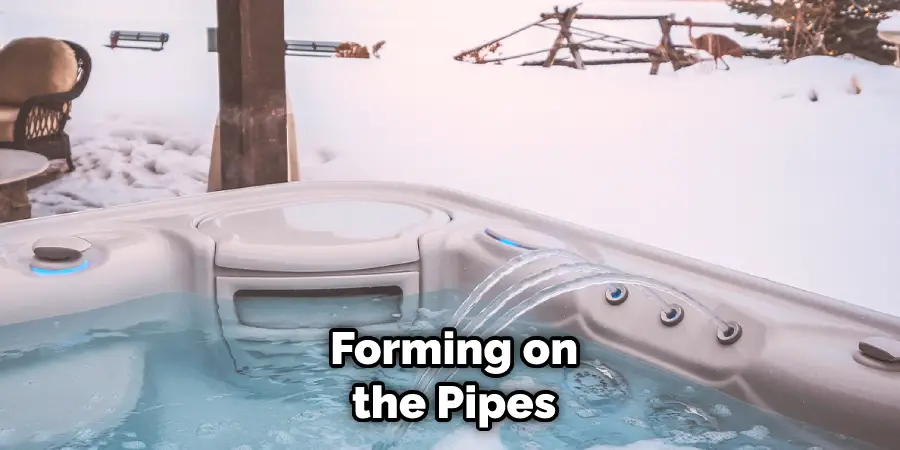
Conclusion
In conclusion, if you are the proud owner of an inflatable hot tub and want to ensure it is insulated for winter, there are a few steps you can take. Start by using some kind of bubble wrap or foam insulation around the sides and bottom of your hot tub.
This will help keep the air inside warmer for longer periods of time. Additionally, cover your hot tub with a high-quality winterized cover and use air pump insulation to help keep the air inside warm. Finally, add some sort of portable heater if needed, or your area gets particularly cold in the winter.
I hope reading this post has helped you learn how to insulate inflatable hot tub in winter. Make sure the safety precautions are carried out in the order listed.
You Can Check It Out to Inflate Swimming Tube

